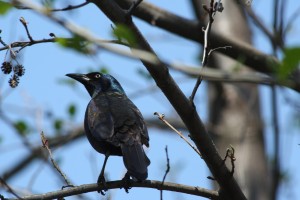Saturday Morning Bird Walks Resume
Posted in Programs and Events, Wildlife on September 3 2009, by Plant Talk
Join Debbie Becker in Looking for Early Migrants
 |
Debbie Becker leads a free bird walk at the Garden every Saturday from 11 a.m. to 12:30 p.m. beginning at the Reflecting Pool in the Leon Levy Visitor Center. |
 While the spring migration is exciting because of the colorful warblers that come through, the fall migration is much more spectacular in other ways. The warblers pass through again, but in drabber colors.
While the spring migration is exciting because of the colorful warblers that come through, the fall migration is much more spectacular in other ways. The warblers pass through again, but in drabber colors.
But it is the hawks, owls, harriers, ospreys, eagles, sparrows, swifts, swallows, and shorebirds on the move that attract most of the attention of bird watchers. The migration begins in late July, when the shorebirds begin showing up on coastal beaches. Osprey follow as they move south to open water. By mid-to-late August we see other species also migrating such as dragonflies and monarch butterflies. By September, the skies will be filled with their movement as well as of swifts and swallows.
As the last days of summer approach in mid-September and heat thermals rise off the Earth, the hawk migration will be in full swing. The hawks use the warm thermals to soar and conserve energy. A good thermal can allow a hawk to coast for miles. Broad-winged hawks are notorious for gliding on thermals in groups of thousands, known as “kettles,” during their migration from North America to South America.
Ruby-throated hummingbirds frequent the Garden during September as the jewelweed comes into bloom, filling their bellies with sweet nectar for the return trip to their wintering grounds. A hummingbird can fly nonstop up to 24 hours and almost 600 miles on stored fat.
